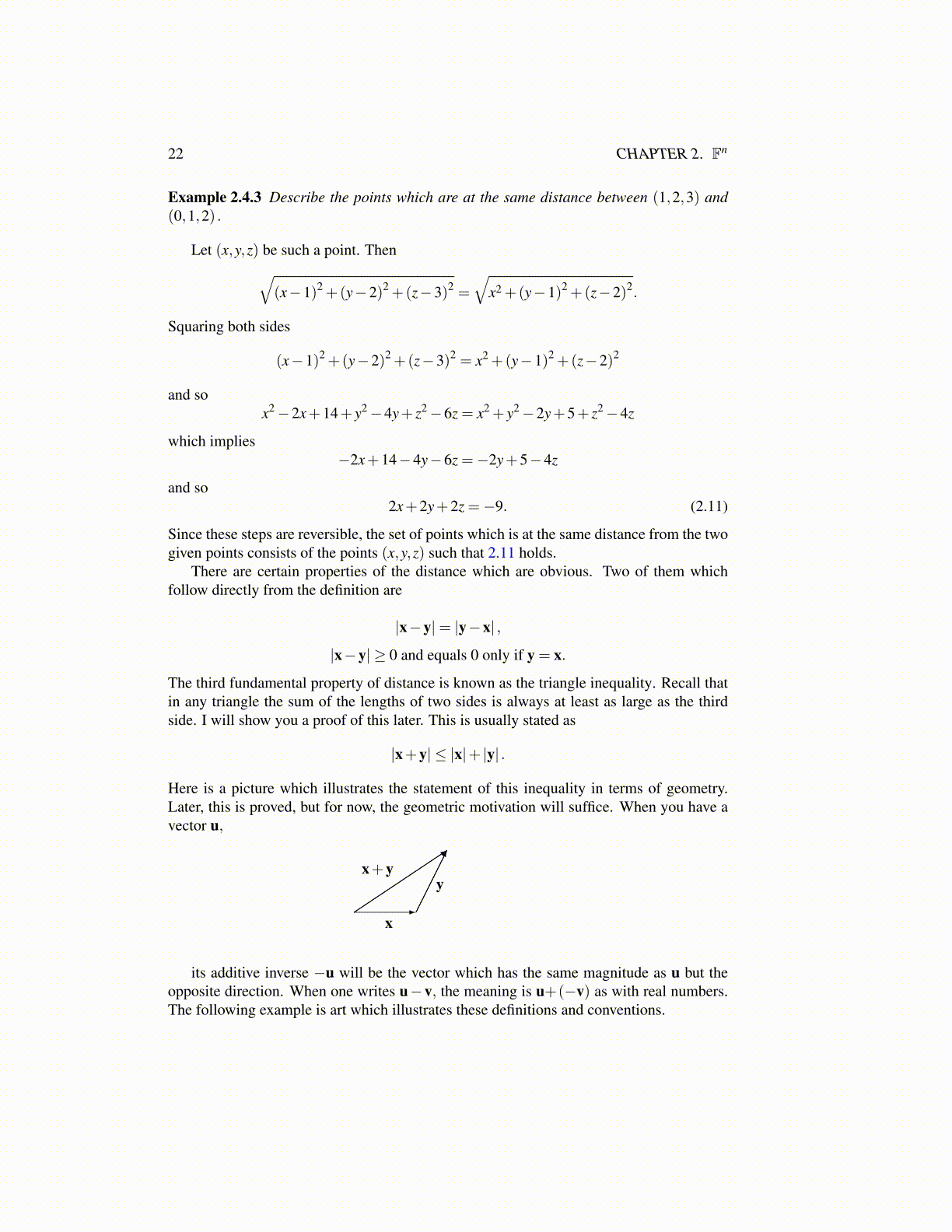
22 CHAPTER 2. Fn
Example 2.4.3 Describe the points which are at the same distance between (1,2,3) and(0,1,2) .
Let (x,y,z) be such a point. Then√(x−1)2 +(y−2)2 +(z−3)2 =
√x2 +(y−1)2 +(z−2)2.
Squaring both sides
(x−1)2 +(y−2)2 +(z−3)2 = x2 +(y−1)2 +(z−2)2
and sox2−2x+14+ y2−4y+ z2−6z = x2 + y2−2y+5+ z2−4z
which implies−2x+14−4y−6z =−2y+5−4z
and so2x+2y+2z =−9. (2.11)
Since these steps are reversible, the set of points which is at the same distance from the twogiven points consists of the points (x,y,z) such that 2.11 holds.
There are certain properties of the distance which are obvious. Two of them whichfollow directly from the definition are
|x−y|= |y−x| ,
|x−y| ≥ 0 and equals 0 only if y = x.
The third fundamental property of distance is known as the triangle inequality. Recall thatin any triangle the sum of the lengths of two sides is always at least as large as the thirdside. I will show you a proof of this later. This is usually stated as
|x+y| ≤ |x|+ |y| .
Here is a picture which illustrates the statement of this inequality in terms of geometry.Later, this is proved, but for now, the geometric motivation will suffice. When you have avector u,
x+y
x
y
its additive inverse −u will be the vector which has the same magnitude as u but theopposite direction. When one writes u−v, the meaning is u+(−v) as with real numbers.The following example is art which illustrates these definitions and conventions.